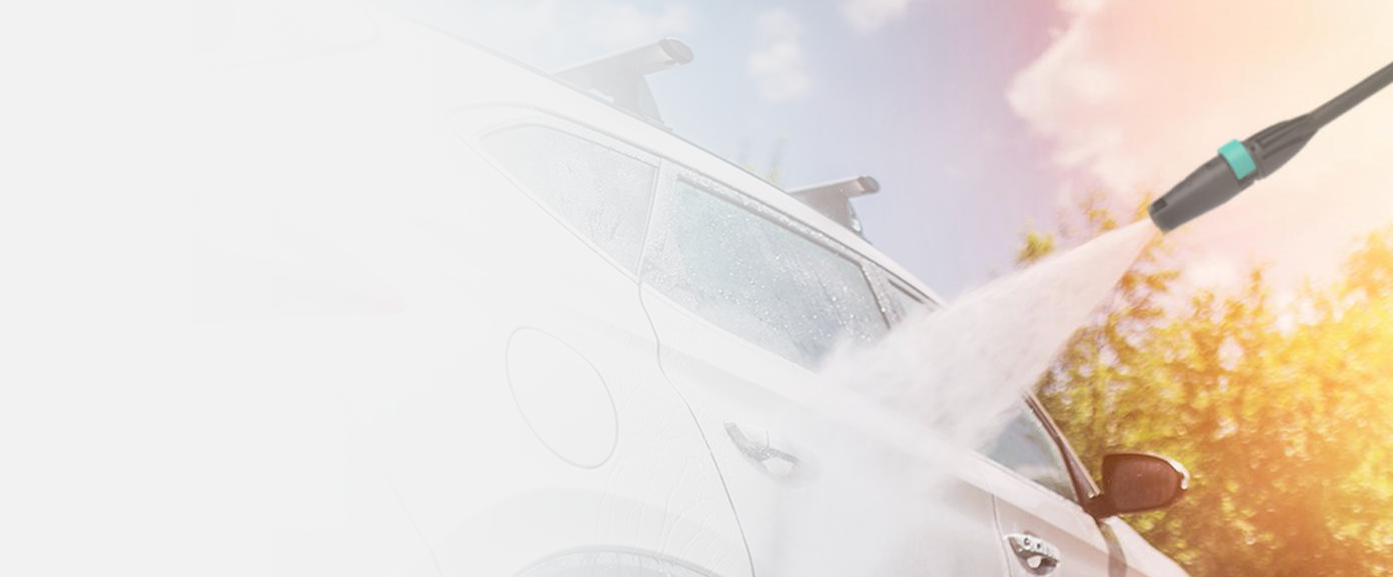Web Menu
Product Search

How do BSP hose fittings perform in environments with fluctuating temperatures or exposure to chemicals?
1. Performance in Fluctuating Temperatures:
Fluctuating temperatures, whether sudden temperature changes or prolonged exposure to either extreme heat or cold, can affect the physical properties of BSP hose fittings. These fittings are typically used in environments where fluid dynamics are subject to thermal variation, including industrial, automotive, and HVAC applications.
Thermal Expansion and Contraction:
All materials experience thermal expansion when heated and contraction when cooled. BSP hose fittings made from materials like brass, aluminum, stainless steel, or carbon steel will all react to temperature fluctuations, but to different extents. The impact of thermal expansion and contraction on BSP hose fittings is particularly important in applications where the fittings are subjected to significant temperature changes. For instance, brass BSP fittings expand and contract at a higher rate compared to stainless steel fittings, which have a lower coefficient of thermal expansion. This disparity can result in loosened connections or stressed seals in environments with large temperature swings.
For applications where temperature cycling is frequent, it is crucial to choose fittings with materials that exhibit minimal expansion and contraction under varying temperatures. Stainless steel, with its low thermal expansion properties and excellent strength retention, is commonly used in such cases. Fittings made from stainless steel or high-alloy steel are ideal for systems exposed to extreme temperatures ranging from sub-zero environments to high-heat industrial settings, offering better structural integrity than softer materials like brass.
Material Selection for Extreme Temperatures:
The material used for BSP hose fittings should be selected based on the temperature range of the application. Stainless steel BSP fittings are often favored in extreme temperature conditions because they can withstand both high temperatures (up to 600°F or higher, depending on the alloy) and low temperatures (down to -100°F) without losing their mechanical properties. Stainless steel’s resistance to thermal degradation makes it particularly suitable for applications in the chemical, oil and gas, food processing, and automotive industries, where both heat and cold are prevalent.
Brass BSP fittings, while durable and corrosion-resistant, may be more susceptible to damage at extreme temperatures. In high-heat applications, brass fittings can soften and lose their strength, leading to potential leaks. Similarly, in freezing conditions, brass can become brittle and prone to cracking. Therefore, careful consideration must be given when selecting BSP hose fittings for applications subject to extreme or fluctuating temperatures.
Effect of Temperature on Seals and Gaskets:
In environments with fluctuating temperatures, the seals and gaskets used in BSP hose fittings are often the most vulnerable components. Temperature fluctuations can cause rubber seals to harden, crack, or lose their elasticity. This compromises the integrity of the seal and increases the risk of leaks. Rubber seals are commonly used in BSP hose fittings but they may become brittle when exposed to high temperatures or freeze in extremely cold conditions, which leads to an inability to maintain an effective seal.
To address this issue, higher-performance materials such as PTFE (Polytetrafluoroethylene) or Viton seals are recommended in environments that experience significant temperature fluctuations. PTFE seals, known for their chemical inertness and wide temperature tolerance, can handle temperatures from -100°F to 500°F, making them ideal for both high-heat and low-temperature environments. Viton, a synthetic rubber material, offers superior heat resistance and performs well in extreme temperature variations, making it an excellent choice for systems exposed to both hot and cold conditions.
2. Performance in Chemical Environments:
In industrial and commercial applications, BSP hose fittings are often exposed to various chemicals, solvents, oils, and aggressive substances. Chemical exposure can lead to degradation, corrosion, and even failure of the fittings if they are not selected and maintained properly.
Corrosion Resistance of Materials:
The material selection for BSP hose fittings is critical when dealing with chemicals. Stainless steel is a highly favored material due to its inherent corrosion resistance in aggressive environments. Stainless steel fittings resist corrosion from common chemicals such as acids, alkalis, and salts, which makes them ideal for use in chemical processing, marine, and food industries. They are resistant to rust, pitting, and stress corrosion cracking, providing long-lasting service life even in corrosive environments.
However, brass BSP fittings, while resistant to mild chemical exposure, are more prone to corrosion when exposed to acidic or alkaline substances. Brass can also suffer from dezincification (loss of zinc from the alloy), which weakens the material and affects its structural integrity. Therefore, in applications where the fittings are exposed to harsh chemicals, it is often recommended to use stainless steel or nickel-plated fittings for improved durability and longevity.
For chemical applications, it is essential to ensure that the material is compatible with the specific chemicals in use. Nickel-plated BSP hose fittings can also provide an additional layer of protection in environments where there is exposure to aggressive chemicals or moisture. While plating offers some corrosion resistance, it is important to note that plating can wear over time, especially in abrasive environments, and may need to be periodically inspected or replaced.
Chemical Compatibility of Seals:
In environments with chemical exposure, the seals used in BSP hose fittings must be carefully chosen for their resistance to specific chemicals. Rubber seals are not suitable for most chemical environments, as they can degrade quickly when exposed to strong acids, oils, or solvents. PTFE seals, which are highly resistant to a wide range of chemicals, are often used in these applications. PTFE is chemically inert and does not react with most chemicals, which makes it ideal for use in environments where the hose fitting may come into contact with aggressive substances.
Viton seals are another excellent choice for chemical environments, as they offer superior resistance to oils, fuels, acids, and other harsh chemicals, in addition to maintaining their flexibility and sealing properties at high temperatures. These seals ensure that the BSP hose fitting remains leak-free even when exposed to a variety of chemical agents.
3. Long-Term Durability and Performance:
Degradation Over Time:
Both temperature fluctuations and chemical exposure can lead to gradual degradation of BSP hose fittings over time. Thermal cycling, where a fitting is repeatedly exposed to extreme heat and cold, can cause material fatigue. This can lead to cracking, reduced strength, and the eventual failure of the fitting, especially if the material is not chosen for its resistance to these stresses.
Similarly, exposure to harsh chemicals can cause embrittlement, erosion, or stress corrosion cracking in materials that are not properly suited to the chemicals they encounter. Regular monitoring and preventive maintenance are crucial to ensure that BSP hose fittings continue to function reliably in such environments. Fittings should be regularly inspected for signs of corrosion, cracks, or wear, and replaced as needed.
Maintenance and Monitoring:
To ensure the ongoing performance of BSP hose fittings in environments with fluctuating temperatures or exposure to chemicals, routine inspection and maintenance are vital. This includes checking for signs of corrosion, wear on seals, and any changes in the fitting’s structural integrity. Lubricating the threads and ensuring the seals are intact are critical maintenance steps. For applications exposed to chemicals, ensure that the material selected for the fittings, including seals, is compatible with the chemicals in use, and replace fittings as necessary based on wear or degradation.
Related products
-

Soft Grip Industrial High Pressure Spray Gun
Soft grip industrial high pressure spray guns are specifically designed for high-pressure cleaning applications, utilizing water as the sole medium. These spray guns are engineered with a high-pressur...
See Details -

Weep Trigger Spray Gun
The Weep Trigger Spray Gun is an innovative water gun designed specifically to prevent high-pressure water pipes from freezing in winter. Its core feature is the small hole design at the spray gun val...
See Details -

High Pressure Power Spray Gun
The high pressure power spray gun is an innovative cleaning equipment that integrates efficient cleaning and convenient operation. It uses high-pressure water flow to remove stubborn stains and is sui...
See Details -

High Pressure Washing Spray Gun
The high pressure cleaning spray gun is a standard configuration of a high pressure cleaning machine. The high-pressure water flow from the high-pressure cleaning machine passes through a high-pressur...
See Details -

Carpet Cleaning High Pressure Cleaning Gun
The carpet cleaning high pressure cleaning gun is a tool designed specifically for deep cleaning, using high-pressure water flow to efficiently remove dirt, dust, and stubborn stains from carpet fiber...
See Details -

4500psi High Pressure Washing Spray Gun
The 4500psi high pressure washing spray gun is a specialized tool designed for high-pressure liquid delivery and cleaning tasks, widely utilized in industrial cleaning, automotive maintenance, agricul...
See Details -

Brass Outlet Trigger Spray Gun
The brass outlet trigger spray gun is made of high-quality brass material and equipped with precise trigger design. Users can adjust the water flow rate and spray angle according to their needs to ach...
See Details -

Heavy Duty Stainless Steel Flushing Gun
The heavy-duty brass flushing gun is specifically designed for low-pressure applications such as garden irrigation, dust suppression, and equipment cleaning. The ergonomic handle features an anti-slip...
See Details -

Industrial Cleaning Trigger Spray Gun
Industrial cleaning trigger spray gun is an efficient and durable cleaning equipment. Its internal sealing components are made of high-strength materials, effectively preventing leakage. Its design ca...
See Details -

Portable Handheld Trigger Spray Gun
The portable handheld trigger spray gun is made of high-strength engineering plastics and/or metal materials, and the handheld part is coated with anti slip rubber to enhance the safety and comfort of...
See Details
Related News
-

Comparative analysis of the structural characteristics and multi-scenario applications of foam sprayers
The basic structure and working principle of the foam sprayer Foam sprayer is a device that mixes liquid diluent and air and sprays in the form of foam. It is widely used in car washing, industrial cl...
See Details -

High-pressure cleaning machine water broom full scene application and selection guide
What is a high Pressure Washer Water Broom? A high Pressure Washer Water Broom is an accessory tool designed to improve floor cleaning efficiency and is usually used in conjunction with a high-pressur...
See Details -

How does pressure washing spray gun improve the efficiency and effectiveness of car cleaning
Introduction: Demands and Challenges of Modern Car Washing In modern society, cars have become an indispensable means of transportation in daily life, and almost every family has one or more cars. Wit...
See Details -

Pressure Washing Spray Gun Safety Guide: Avoiding Injuries and Malfunctions
1. Understand the basic structure and working principle of high-pressure cleaning spray guns The basic structure of a high-pressure cleaning gun A high-pressure cleaning gun consists of multiple parts...
See Details
- CONTACT DETAILS
- Address : No. 435 Yuncai road, Yunlong Industry Park, Yinzhou District, Ningbo China. 315137
- Fax : 0086-13003738672
- Tel: 0086-13003738672
- Email: [email protected]
- PRODUCTS
- Pressure Washing Spray Gun
- Pressure Washer Lance
- Couplings
- Hose Fitting
- Nozzle
- Pressure Gauge
- QUICK LINK
- Company Profile
- Plant equipment
- Certifications
- FAQ
- NEWS CENTER
- Compnay News
- Industry News
- MOBILE TERMINAL

 English
English русский
русский +0086-13003738672
+0086-13003738672
